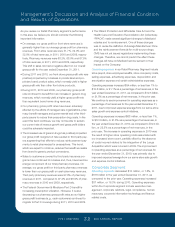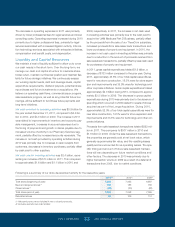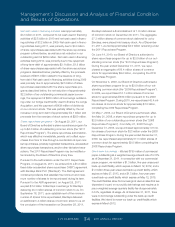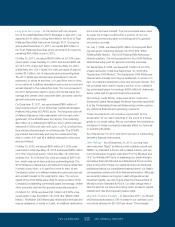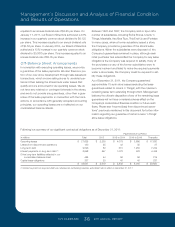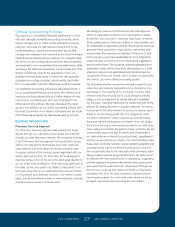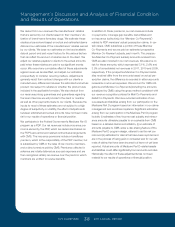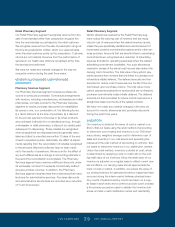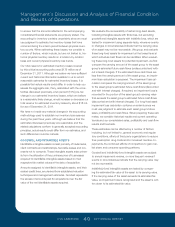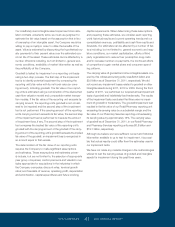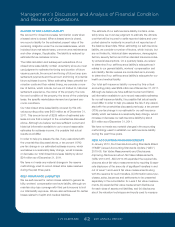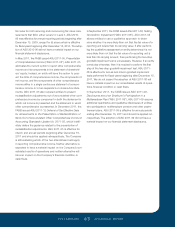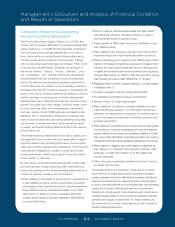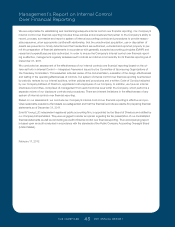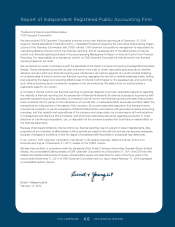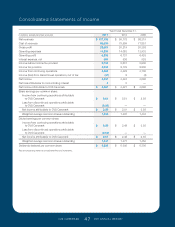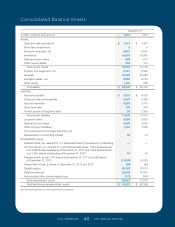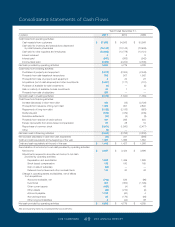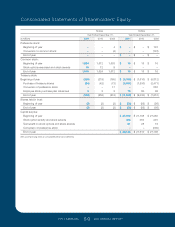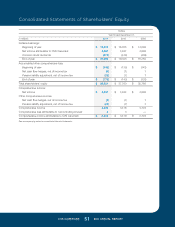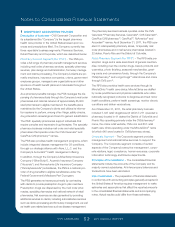CVS 2011 Annual Report Download - page 44
Download and view the complete annual report
Please find page 44 of the 2011 CVS annual report below. You can navigate through the pages in the report by either clicking on the pages listed below, or by using the keyword search tool below to find specific information within the annual report.
Management’s Discussion and Analysis of Financial Condition
and Results of Operations
CVS CAREMARK 42 2011 ANNUAL REPORT
CLOSED STORE LEASE LIABILITY
We account for closed store lease termination costs when
a leased store is closed. When a leased store is closed,
we record a liability for the estimated present value of the
remaining obligation under the noncancelable lease, which
includes future real estate taxes, common area maintenance
and other charges, if applicable. The liability is reduced by
estimated future sublease income.
The initial calculation and subsequent evaluations of our
closed store lease liability contain uncertainty since we must
use judgment to estimate the timing and duration of future
vacancy periods, the amount and timing of future lump sum
settlement payments and the amount and timing of potential
future sublease income. When estimating these potential ter-
mination costs and their related timing, we consider a num-
ber of factors, which include, but are not limited to, historical
settlement experience, the owner of the property, the loca-
tion and condition of the property, the terms of the underlying
lease, the specific marketplace demand and general eco-
nomic conditions.
Our total closed store lease liability covered by this criti-
cal accounting policy was $430 million as of December 31,
2011. This amount is net of $239 million of estimated sub-
lease income that is subject to the uncertainties discussed
above. Although we believe we have sufficient current and
historical information available to us to record reasonable
estimates for sublease income, it is possible that actual
results could differ.
In order to help you assess the risk, if any, associated with
the uncertainties discussed above, a ten percent (10%)
pre-tax change in our estimated sublease income, which
we believe is a reasonably likely change, would increase
or decrease our total closed store lease liability by about
$24 million as of December 31, 2011.
We have not made any material changes in the reserve
methodology used to record closed store lease reserves
during the past three years.
SELF-INSURANCE LIABILITIES
We are self-insured for certain losses related to general lia-
bility, workers’ compensation and auto liability, although we
maintain stop loss coverage with third party insurers to limit
our total liability exposure. We are also self-insured for certain
losses related to health and medical liabilities.
The estimate of our self-insurance liability contains uncer-
tainty since we must use judgment to estimate the ultimate
cost that will be incurred to settle reported claims and unre-
ported claims for incidents incurred but not reported as of
the balance sheet date. When estimating our self-insurance
liability, we consider a number of factors, which include, but
are not limited to, historical claim experience, demographic
factors, severity factors and other standard insurance indus-
try actuarial assumptions. On a quarterly basis, we review
to determine if our self-insurance liability is adequate as it
relates to our general liability, workers’ compensation and
auto liability. Similar reviews are conducted semi-annually
to determine if our self-insurance liability is adequate for our
health and medical liability.
Our total self-insurance liability covered by this critical
accounting policy was $509 million as of December 31, 2011.
Although we believe we have sufficient current and histori-
cal information available to us to record reasonable estimates
for our self-insurance liability, it is possible that actual results
could differ. In order to help you assess the risk, if any, associ-
ated with the uncertainties discussed previously, a ten percent
(10%) pre-tax change in our estimate for our self-insurance
liability, which we believe is a reasonably likely change, would
increase or decrease our self-insurance liability by about
$51 million as of December 31, 2011.
We have not made any material changes in the accounting
methodology used to establish our self-insurance liability
during the past three years.
NEW ACCOUNTING PRONOUNCEMENTS
In January 2010, the Financial Accounting Standards Board
(“FASB”) issued Accounting Standards Update (“ASU”)
2010-06, Fair Value Measurements and Disclosures:
Improving Disclosures about Fair Value Measurements,
(“ASU 2010-06”). ASU 2010-06 expanded the required dis-
closures about fair value measurements by requiring (i) sepa-
rate disclosure of the amounts of significant transfers in and
out of Level 1 and Level 2 fair value measurements along
with the reasons for such transfers, (ii) information about pur-
chases, sales, issuances and settlements to be presented
separately in the reconciliation for Level 3 fair value measure-
ments, (iii) expanded fair value measurement disclosures
for each class of assets and liabilities, and (iv) disclosures
about the valuation techniques and inputs used to measure
127087_Financial.indd 42 3/9/12 9:42 PM


